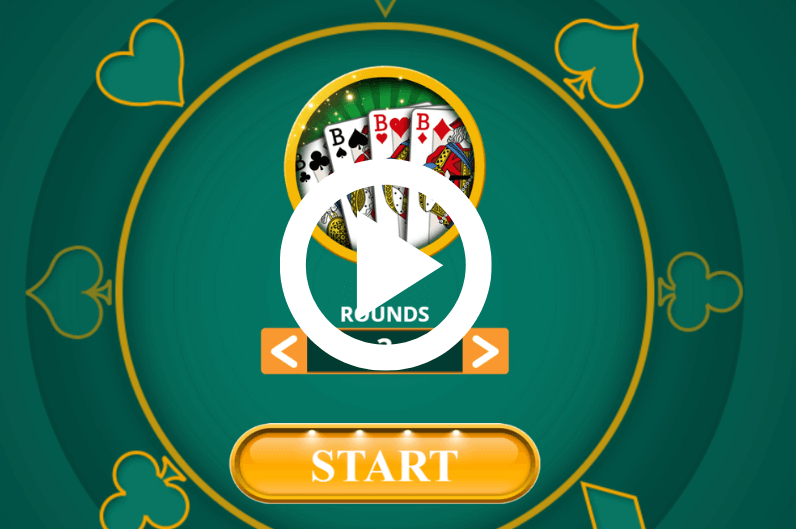

He or she may peek into the hand of one other player (if allowed to do so) but never into the Skat.ĭealing rotates clockwise around the table after each hand, so that the player sitting to the left of the dealer will be dealer for the next hand. In four-player rounds, the dealer does not receive any cards and skips actual play of the hand. Rules insist that dealing follows this pattern: deal three cards each, then deal the Skat, then four cards each, then three cards again (“three–Skat–four–three”). DealingĪt the beginning of a hand each player is dealt ten cards, with the two remaining cards (the so called Skat) being put face down in the middle of the table. The choice of deck does not affect the rules. Since German reunification, a compromise Turnierbild deck is used in tournaments that uses the English face designs with the shapes of the French suits but with corresponding German suit colors, notably green Spades ♠ and yellow Diamonds ♦. By contrast, regions of the former West Germany had adopted a French-suited (♣♠ ♥♦) deck (of which the Anglo-American deck is a variant). Until recently in Saxony and Thuringia, for example, German-suited decks were used almost exclusively. The 32 cards from the German deck are the 7, 8, 9, 10, Unter, Ober, King and Daus (2). Some players in Eastern and Southern Germany and Austria prefer German decks with the suits of bells, hearts, leaves and acorns. The deck consists of 32 cards which are the 7, 8, 9, 10, jack, queen, king and ace in all suits, if using the French deck. Generally, if declarer wins he or she scores a positive amount, otherwise the score is doubled and subtracted from declarer's tally (i.e. Points from tricks are not directly added to the players' overall score, they are only used to determine the outcome of the deal (win or loss for declarer), although winning by certain margins may increase the score for that deal.Īfter each deal a score is awarded, depending on the type of deal, how high it was won (or lost) and bidding calls that had been made. Otherwise, the defending team wins the deal. The total face value of all cards being 120 points, declarer's goal is to take at least 61 points in tricks in order to win the deal. Then, ten tricks are played, allowing players to take trick points: each card has a face value (except in Null games) and is worth that amount in points for the player winning the trick.

The game can also be played in a round of four players in this case, the dealer will sit out the hand that was dealt.Ī central aspect of the game are the three coexisting varieties called “suit game”, “Grand” and “Null”, that are differing in suit order, scoring and even overall goal to achieve.Įach deal starts with a bidding phase to determine declarer and type of game. The two defenders are not allowed to communicate in any way except by their choice of cards to play. At the beginning of each deal, one player becomes declarer and the other two players become the defending team. Skat is a game for exactly three players. Note: Because of the many variations in the rules of Skat, the rules below are necessarily general, although rules not found in official German tournament play are marked as such. The word scarto is one still used in other Italian card games to this day, and in some German works the word is found spelled "scat". The very word Skat is a Tarok term deriving from the Italian word scarto, "scartare", which means to discard or reject, and its derivative "scatola", a box, or a place for safe-keeping. The current rules, followed by both the ISPA and the German Skat Federation, date from Jan. Nevertheless, the rules continued to differ by region until the first attempt to set them in order was made by a congress of Skat players on Saturday, 7 August 1886 in Altenburg, being the first official rules finally published in book form in 1888 by Theodor Thomas of Leipzig. The first text book on the rules of Skat was published in 1848 by a secondary school Professor called J. But the main innovation of this new game was then that of the Bidding process. In the earliest known form of the game, the player in prior position was dealt twelve cards to the other players' ten each, made two discards, constituting the skat, and then announced a contract. Skat was developed by the members of the Brommesche Tarok-Gesellschaft between 18 in Altenburg, in what is now the Federated State of Thuringia, Germany, based on the three-player game of Tarock, also known as Tarot, and the four-player game of Schafkopf (the American equivalent being Sheepshead). 4.2 Scoring in North American (Tournee) Skat.4.1 The Games in North American (Tournee) Skat.


 0 kommentar(er)
0 kommentar(er)
